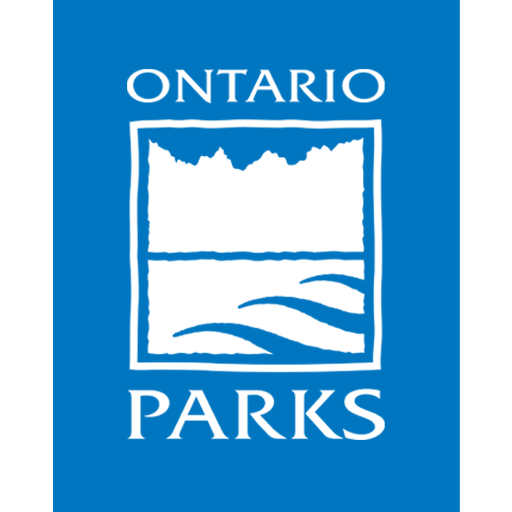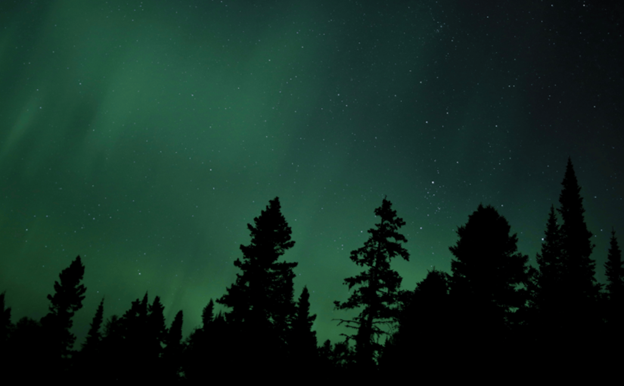Today’s post comes from Roger LaFontaine, park naturalist and passionate blackfly advocate.
Imagine yourself by the side of a beautiful, rocky stream or river in Algonquin Provincial Park.
The idyllic spot for pondering life’s mysteries, like “what does it look like inside a kingfisher’s burrow?” or “do the bioluminescent fungi glow during the day, too?”
As you enjoy your Instagrammable moments streamside, you are surrounded by a hum, vibrations, and the tickle of tiny feet.
It’s like you’re a celebrity, a guest of honour!
You have arrived to one of Algonquin’s newly established Blackfly Protection Zones.
Soon you are overtaken by dozens, then hundreds, and maybe, if we did our jobs right, thousands of blackflies!
Yes, they are after your blood, but it’s nothing personal. The females require a blood meal in order to produce eggs for the next generation.
Keeping it natural (with our help)
Blackflies are important connections in our food webs here in the park.
They start life as aquatic larvae, filter feeding from the streams, while they are attached to rocks.

Imagine hundreds of thousands of tiny arms waving in the current, reaching out for a chance to grab a passing meal of a finely-aged and delicious delicacy.
As they grow, they will eventually emerge as a fly, floating to the surface in a tiny bubble. This incredible entrance brings them to the surface of the stream, where they begin their new life as a flying adult, and for the females, a diet of sweet, sweet blood.
Newly established BPZs
We are protecting important areas for blackflies to ensure that this critical element of natural communities continues to support the rest of Algonquin.
Parks are meant to protect natural habitats and the native plants and animals that live there, even the small and bite-y ones.

Staff are excited to invite you to see the results of this groundbreaking work, by visiting one of the newly established BPZs along Highway 60 this year:
Whiskey Rapids Trail — An area known for its beautiful views of the Oxtongue River, which provides excellent habitat for blackflies.
Pog Lake Campground — The river here is an opportunity for campers to see our work in action from their very own campsites.

The entire Madawaska River watershed — In an example of a more holistic approach to conserving blackflies, we created the Madawaska River watershed BPZ, which in the park encompasses countless popular lakes and canoes routes.
And, of course, the erroneously named area around Mosquito Lake. Staff considered petitioning a formal name change, but conceded that it was a prime example of mosquitos and blackflies living in harmony.
Your donation helps our wildlife!

We are always amazed by the generosity of our visitors. Many want to know how they can help our parks.
The answer will come to you while hiking, on your campsite, or trying to do a task that requires concentration, like setting up your tent or tying down your canoe — a cloud of blackflies!
Your blood, life-giving blood, will help support the next generation of blackflies.
I always smile when I see people arriving to the Visitor Centre, covered in welts, and blackflies coming out of their hair — that’s real dedication!
Not convinced?
These facts may change your mind:
- in our area, blackflies do not transmit diseases to humans
- males and females pollinate some flowers (they are not an important pollinator of blueberries, as many have heard)
- they provide food for countless other creatures
- the great hordes of blackflies are active and biting for only a short time in spring and early summer
- there are 42 species in Algonquin alone, and most feed on flower nectar
- blackfly bites are a permitted form of human/wildlife interaction, and the bites look darn cool
Be a good guest to our Blackfly Protection Zones…
…and follow these tips:

- do not alter streams in any way, like moving rocks. This disrupts habitat not just for blackflies, but many other stream-dwelling creatures, from insects, amphibians, and fish like Brook Trout
- wear light-coloured clothing, and cover up. Light colours are more difficult for biting flies to detect as there is little contrast between you and the background
- use insect repellent if you need it. Use as directed. Do not apply in your tent
- please consider not swatting blackflies as they land on you. This habit is also vegan, even if the flies aren’t
A new buzzginning
Decades ago, some parks chose to control biting flies through various means to enhance the enjoyment of visitors.
They wanted all the natural beauty of a park setting, but with less nature there.
Management activities like this are no longer compatible with how we care for parks, and now we all get a chance to enjoy the results.
Depending on the success and public support we receive this year, BPZs may be expanded next year.
We are piloting this type of enhanced protection in Algonquin, however there are many other parks where visitors may suggest new BPZs.
Nominate a new area today!
April Fool’s!





